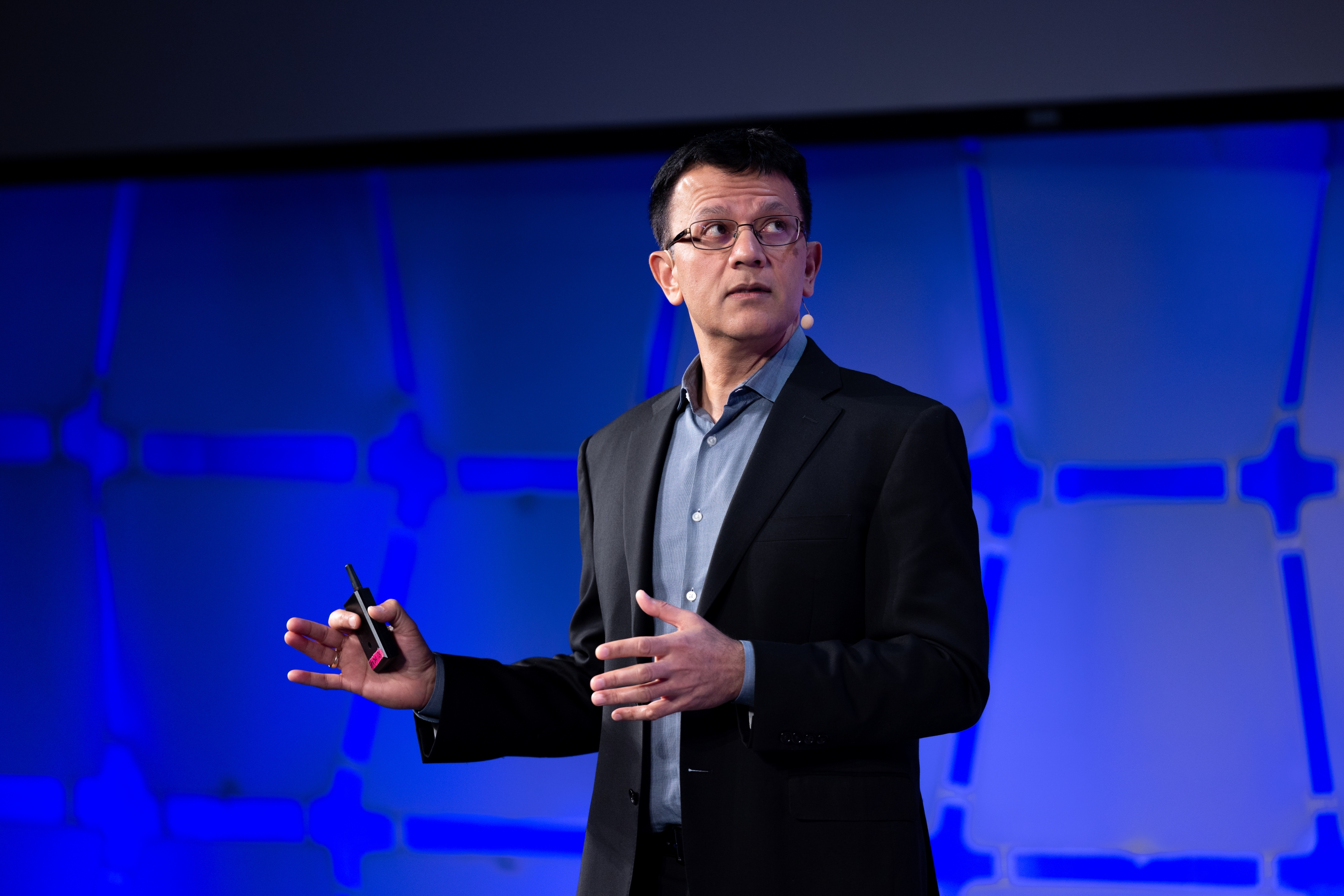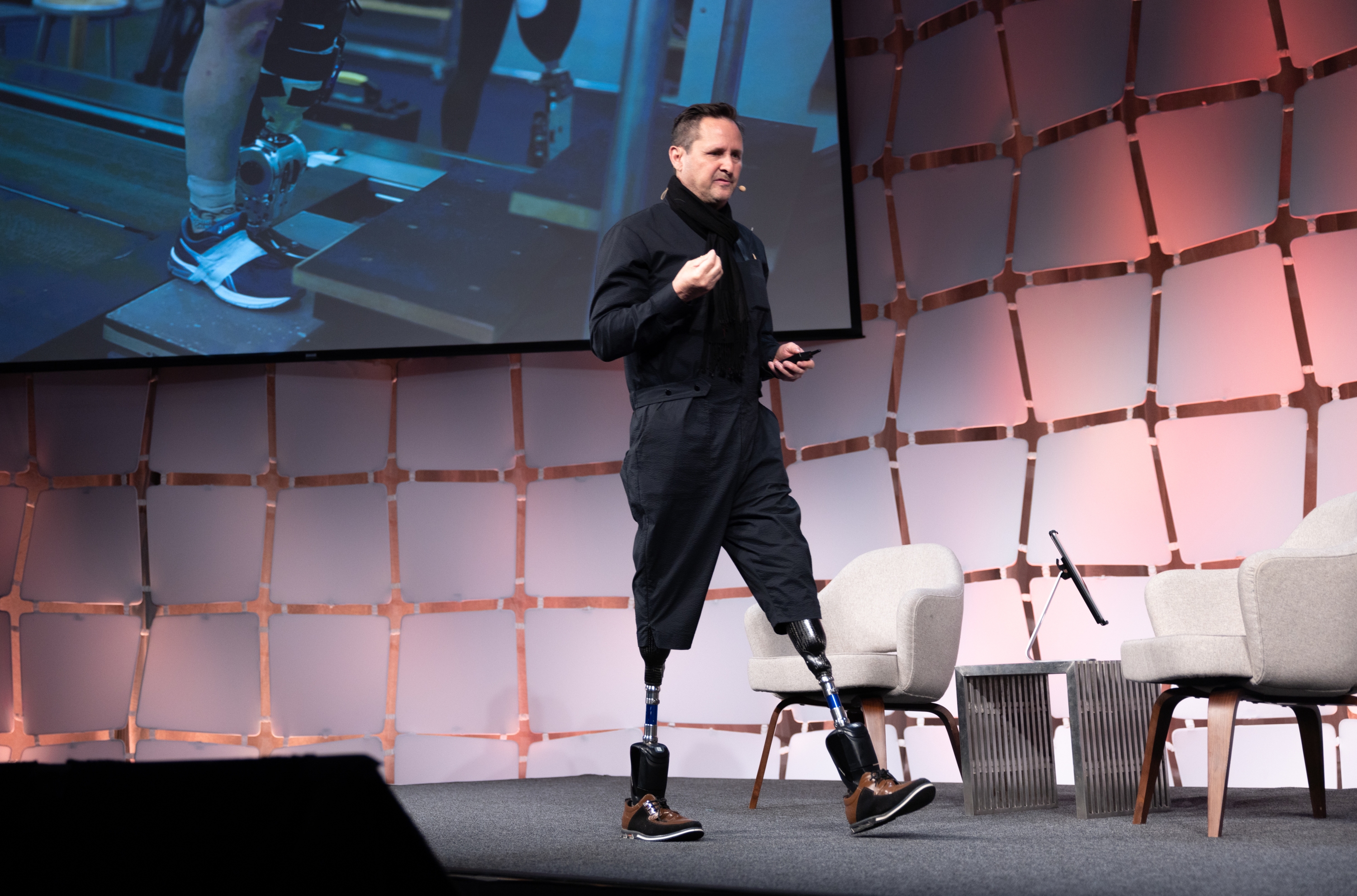
11.50 The rise of voice assistants and ambient AI computing has been pretty phenomenal, and helped to usher in new forms of computing that will continue to unfold over decades, says Sharma. “You don’t want this thing to feel like a tool, you want it to feel like it’s part of you,” he says. “When you’re putting on smart glasses, you want to move on from holding a phone in your hand to something that’s new to you.”
11.30 Voice assistants have been one of the biggest consumer tech success stories of the past decade, with 60% of US households believed to currently own a smart speaker. We’re now going to hear from Vishal Sharma, the vice president of Alexa AI at Amazon, which spearheaded the smart speaker sector with the launch of the first Amazon Echo in 2014.
Sharma is going to dig into the future of voice computing and how it’s revolutionizing the way humans interact with their devices, and, crucially, their data.
11.25 Herr lost both legs below the knee following a mountain climbing accident when he was 17, and uses smart prostheses. He says he hopes to go under the knife again in the hopes of getting critical tissue manipulations and implants, in the hopes of making the relationship he has with his prostheses closer to that other people have with their ankles.
“It’s kind of like never being able to drive, like you’re always in the backseat of a car,” he says. “And if someone’s driving, I want my hands on the wheel and actually want to be part of the car.”

11.15 Herr’s lab is focusing on four projects across four years, one of which involves developing an exoskeleton that could help people who have muscular weakness after experiencing a stroke. It can also help people who do not have muscular weakness to run and move more quickly.
Another project revolves around the pursuit of improving the current technology designed to help people with spinal cord injuries. Many people with these types of injuries typically use a wheelchair, while the lucky few who can afford it can use exoskeleton devices with external motors and processors that move in parallel. Herr’s lab wants to activate a person’s existing skeletal muscles by shining light on the skin to activate the nerves underneath.
11.00 We’re back, and next on the agenda is Hugh Herr, a media arts and sciences professor at the MIT Media Lab and co-director at the K. Lisa Yang Center for Bionics. He is a leader in the emerging field of Biomechatronics: technologies designed to accelerate the enhancement of the human body using machinery.
10.28 We’re now going to take a half-an-hour break, and when we come back we’re talking all things body tech. See you on the other side!
10.20 AR works best in environments such as museums, galleries or other cultural institutions when it’s least expected, says Cason. Layering an AR experience over the top of a piece of art that’s already beautiful risks detracting from it, she says, whereas if you put an experience around something like a sign, or a box, people are surprised and delighted to interact with it—which is exactly the kind of reaction its creators want.
